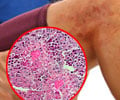
‘Nasogastric tube placement in patients with upper gastrointestinal bleeding may not have significant outcomes.’
Tweet it Now
"Placing a tube through the nose and down into the stomach makes sense if we are talking about delivering nutrition to a patient or to get an idea of what is in someone’s stomach, but the value of placing this tube for patients who have an upper GI bleed has been unclear," Rockey said. "Our goal was to examine that value, and our results suggest that for millions of patients with an upper GI bleed, placing this tube had little clinical benefit and produces unnecessary cost and discomfort for all involved. If it doesn’t help the patient or the clinician trying to diagnose the cause of this kind of bleed, we don’t need it as a standard of care when there is no value."The single-blind, randomized, prospective, non-inferiority study compared NG placement (with aspiration and lavage) to no NG placement (control) and demonstrated that NG tube placement in patients with typical upper GI bleeding had no impact on outcomes. In addition, the placement of NG tubes was often unsuccessful or associated with patient discomfort.
Source-Eurekalert











